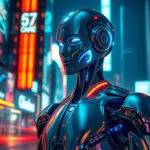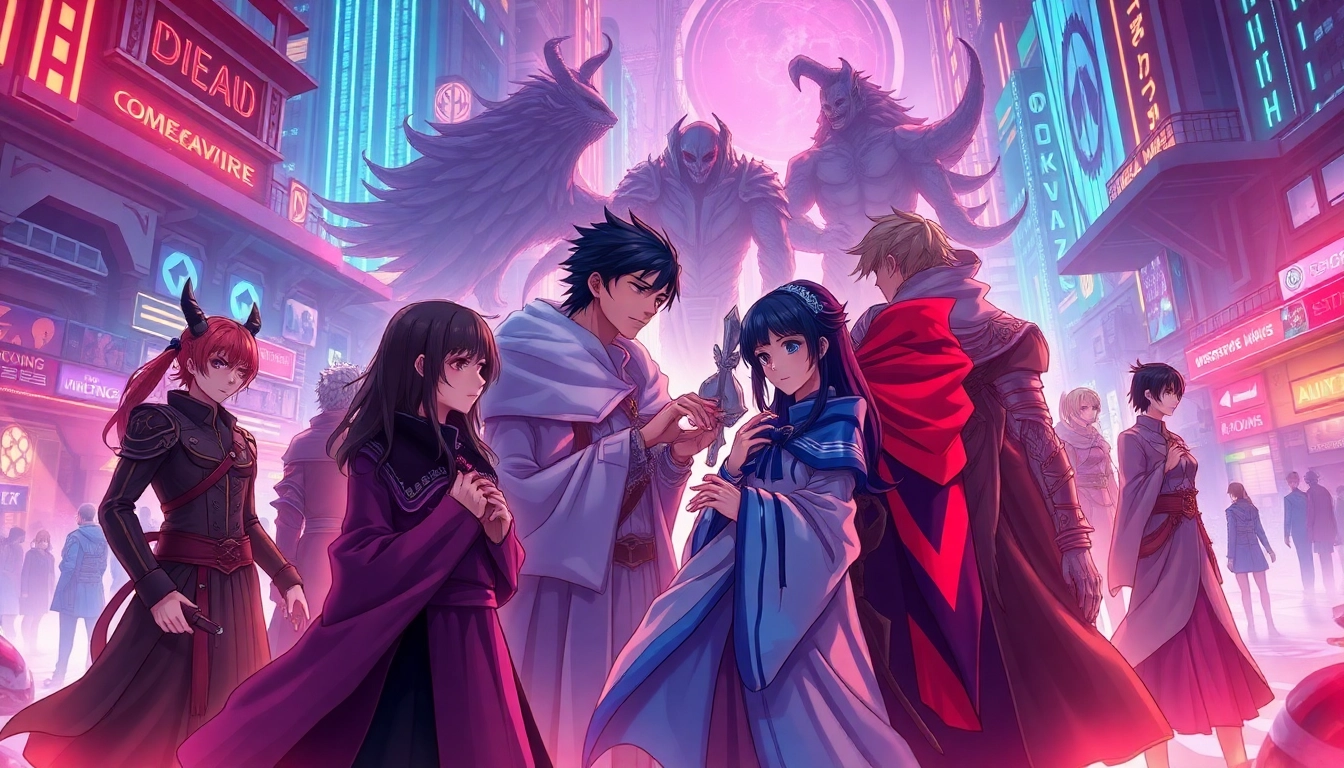Understanding the Omegaverse: Origins, Themes, and Its Cultural Significance
The Omegaverse, a subgenre of speculative fiction, has captivated countless fans across various online communities, especially on platforms like AO3. This genre explores a unique universe where societal roles, biological traits, and interpersonal dynamics are radically different from our reality. To fully appreciate its nuances, one must delve into its origins, core themes, and why it has become such a staple in fan fiction culture. For a comprehensive understanding, you can refer to What is Omegaverse.
Origins and Historical Context of the Omegaverse
Roots in Fan Fiction and Speculative Fiction
The Omegaverse originated within the realm of fan fiction, particularly in the BDSM, gay romance, and speculative fiction communities. It first gained prominence in the early 2010s, primarily through platforms like LiveJournal, FanFiction.net, and later, Archive of Our Own . The genre emerged as a creative exploration of alternative societal structures, emphasizing biological and social roles that challenge traditional norms.
Evolution from Supernatural and Mythological Themes
While initially rooted in fan-created universes, the Omegaverse draws heavily from mythological and supernatural tropes. Its core premise involves characters with animalistic or biological traits—such as alpha, beta, and omega designations—that influence their behavior, social hierarchy, and even reproductive roles. Over time, these elements evolved into complex world-building frameworks that allowed authors to explore themes of dominance, submission, gender fluidity, and societal power dynamics.
Core Elements and Characteristics of Omegaverse Fiction
Biological Hierarchies: Alpha, Beta, Omega
The foundation of the Omegaverse is its categorization of characters based on biological roles: alphas, betas, and omegas. Each role comes with distinct traits and societal expectations:
- Alphas: Typically characterized by dominance, physical strength, and leadership qualities. They often have heightened instincts related to protection and territoriality.
- Betas: Usually considered neutral or balanced, betas do not possess the extreme biological traits of alphas or omegas and often serve as mediators within the social hierarchy.
- Omegas: Often portrayed as nurturing, submissive, or sensitive, omegas have unique biological features such as heat cycles and pheromones that influence their interactions and status.
Reproductive and Biological Traits
One of the hallmark features of Omegaverse stories is their depiction of reproductive biology, which often includes concepts like heats, breeding, and pheromone influence. These traits serve as narrative devices to explore intimacy, consent, and power dynamics in relationships.
Societal Structures and Hierarchies
Omegaverse universes frequently depict a society where biological roles dictate social status, mating practices, and even legal or cultural norms. These hierarchies can mirror or critique real-world societal issues, such as gender roles, authority, and inequality.
Key Themes Explored in Omegaverse Narratives
Power and Dominance
Power dynamics are central to Omegaverse stories. The biological hierarchy often translates into emotional and physical dominance, with alphas typically taking on protective or controlling roles. These themes can serve as metaphors for societal authority or personal autonomy.
Consent and Boundaries
While some stories portray intense scenarios involving dominance and submission, many modern Omegaverse works emphasize consensual relationships and boundary-setting, reflecting evolving conversations around consent in fiction and real life.
Gender Fluidity and Identity
The genre frequently challenges traditional gender norms. Characters may exhibit traits traditionally associated with different genders, or the biological roles may be fluid, allowing for explorations of gender identity and expression beyond binary frameworks.
Love, Loyalty, and Family
At its heart, Omegaverse fiction often centers around romantic and familial bonds. Stories explore themes of loyalty, belonging, and the complexities of chosen families, especially within the context of societal expectations and biological drives.
The Cultural Impact and Community Engagement
Fan Communities and Creative Expression
The Omegaverse has fostered vibrant online communities where fans create, share, and discuss stories, art, and roleplay. Platforms like AO3 serve as hubs for diverse content, ranging from lighthearted romance to darker, more complex narratives. The genre’s flexibility encourages creative experimentation, making it accessible for writers of varying experience levels.
Roleplaying and Interactive Experiences
Beyond written stories, CrushOn AI offers a new dimension to fan engagement through its customizable chatbot platform. Users can create AI characters with specific personalities, traits, and backstories, enabling interactive roleplay that mimics real-time conversations. This feature enhances fan interaction with Omegaverse themes, allowing for immersive storytelling and creative exploration in a dynamic, multi-character environment.
Popular Tropes and Common Plotlines in Omegaverse Fiction
Alpha/Omega Pairings and Forbidden Love
One of the most prevalent tropes involves the romantic pairing of an alpha and omega, often emphasizing themes of forbidden love, societal rebellion, or overcoming biological predestinations. These stories explore emotional depth, trust, and sometimes taboo subjects.
Heat Cycles and Breeding Scenes
Heat cycles are a staple, providing narrative tension and intimacy. These scenes are often depicted with sensitivity or intensity, depending on the story’s tone, and serve as pivotal moments for character development.
Pack Dynamics and Hierarchical Conflicts
Group stories featuring pack hierarchies explore themes of loyalty, rivalry, and leadership struggles. These narratives often delve into complex relationships among multiple characters, emphasizing camaraderie and conflict resolution.
Exploration of Identity and Self-Discovery
Many stories focus on characters questioning their biological roles or discovering new facets of their identity, reflecting broader themes of self-acceptance and societal acceptance.
Responsible Navigation of Content and Themes
Addressing Sensitive Topics
Due to the genre’s exploration of power dynamics, consent, and sometimes adult themes, creators and consumers should approach Omegaverse content responsibly. It’s vital to distinguish between fantasy and real-world expectations, ensuring respectful portrayal of relationships and identities.
Community Guidelines and Ethical Sharing
Platforms like AO3 have community guidelines that promote respectful interaction, consent, and diversity. Engaging with content mindfully and supporting inclusive narratives helps foster a positive environment for fans and creators alike.
Future Trends and the Evolution of Omegaverse Stories
Integration of Diverse Perspectives
As social conversations around gender and sexuality evolve, Omegaverse fiction is increasingly incorporating diverse perspectives, including non-binary and transgender characters. This diversification enriches storytelling and broadens appeal.
Cross-Media Adaptations and Expanding Genres
With technological advancements, Omegaverse themes are expanding into other media, such as comics, animations, and interactive role-playing platforms. These adaptations enhance engagement and provide new avenues for storytelling.
AI-Enhanced Creative Processes
Platforms like CrushOn AI are revolutionizing how fans create and interact with Omegaverse characters. By enabling users to generate customizable AI companions, the genre’s creative possibilities expand exponentially, fostering more personalized and dynamic storytelling experiences.
Resources for Fans and Aspiring Creators
Community and Writing Resources
Websites like AO3 host an extensive archive of Omegaverse stories, with tagging systems that help users find content aligned with their interests. Additionally, forums and social media groups provide support, feedback, and collaboration opportunities for writers.
Educational and Creative Tools
Utilizing AI-driven platforms like CrushOn AI can help creators develop detailed characters, brainstorm plotlines, and simulate conversations, making story development more intuitive and immersive.
Conclusion: The Enduring Allure of the Omegaverse
The Omegaverse remains a fascinating and versatile genre that continues to evolve with societal shifts and technological innovations. Its ability to explore complex themes of identity, power, and relationships within a speculative framework ensures its relevance and popularity. Whether through traditional fan fiction, community roleplay, or cutting-edge AI interactions, the genre’s appeal lies in its capacity for creativity and personal expression. Fans and creators alike find in the Omegaverse a space to challenge norms, explore fantasies, and forge meaningful connections. As the genre advances, it will undoubtedly continue to inspire new stories, characters, and conversations, enriching the tapestry of fan culture worldwide. For those interested in diving deeper into this captivating universe, exploring the Omegaverse AO3 community offers a wealth of stories and insights that exemplify its enduring appeal.









